|
It was my aim to not write up all of this report.
As you can see I partially succeeded. Lots of
thanks to Andy Fish who not only arranged the visits
and accommodation, but also did all of the driving.
As you will read, it was a very varied and
educational tour.
|
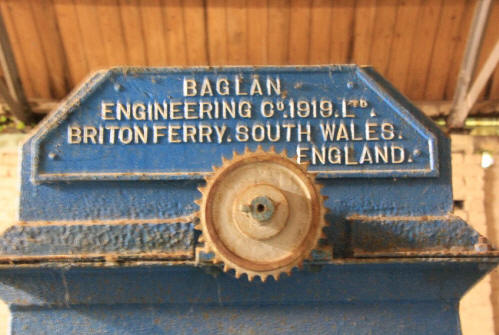 |
Eagle-eyed Eleanor spotted this
machine plate at Kidwelly, but it is a good place to start. It left
us in some doubt as to which country we were in. |
|
Newport Transporter Bridge
Our first lunch break was at Newport
Transporter Bridge, where
4 intrepid HMG members (including photographer Ashok
Vaidya) climbed to the top and then across to bring
you this image of the gondola taking cars across
(and the less energetic members of the group! –
Editor).
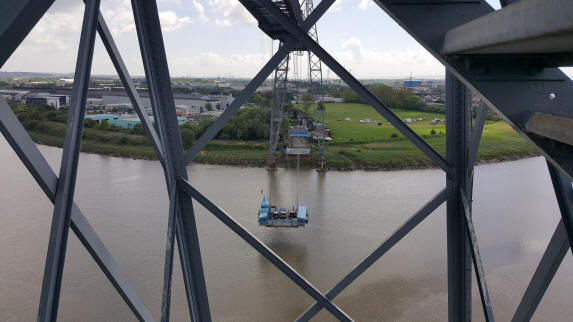
Right : Looking up to see where we were!
Spot the man crossing the walkway
|
 |
|
Cefn Coed Colliery Museum
Pictures by Mick Edgeworth and Ruth
Andrews
|
|
|
Mick Edgeworth says that in its day, this was the
deepest anthracite coal mine in Britain. They have
a unique surviving gas powered tram (without
machinery).
. 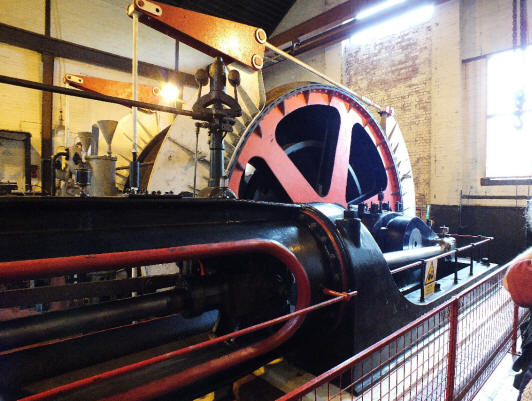 |
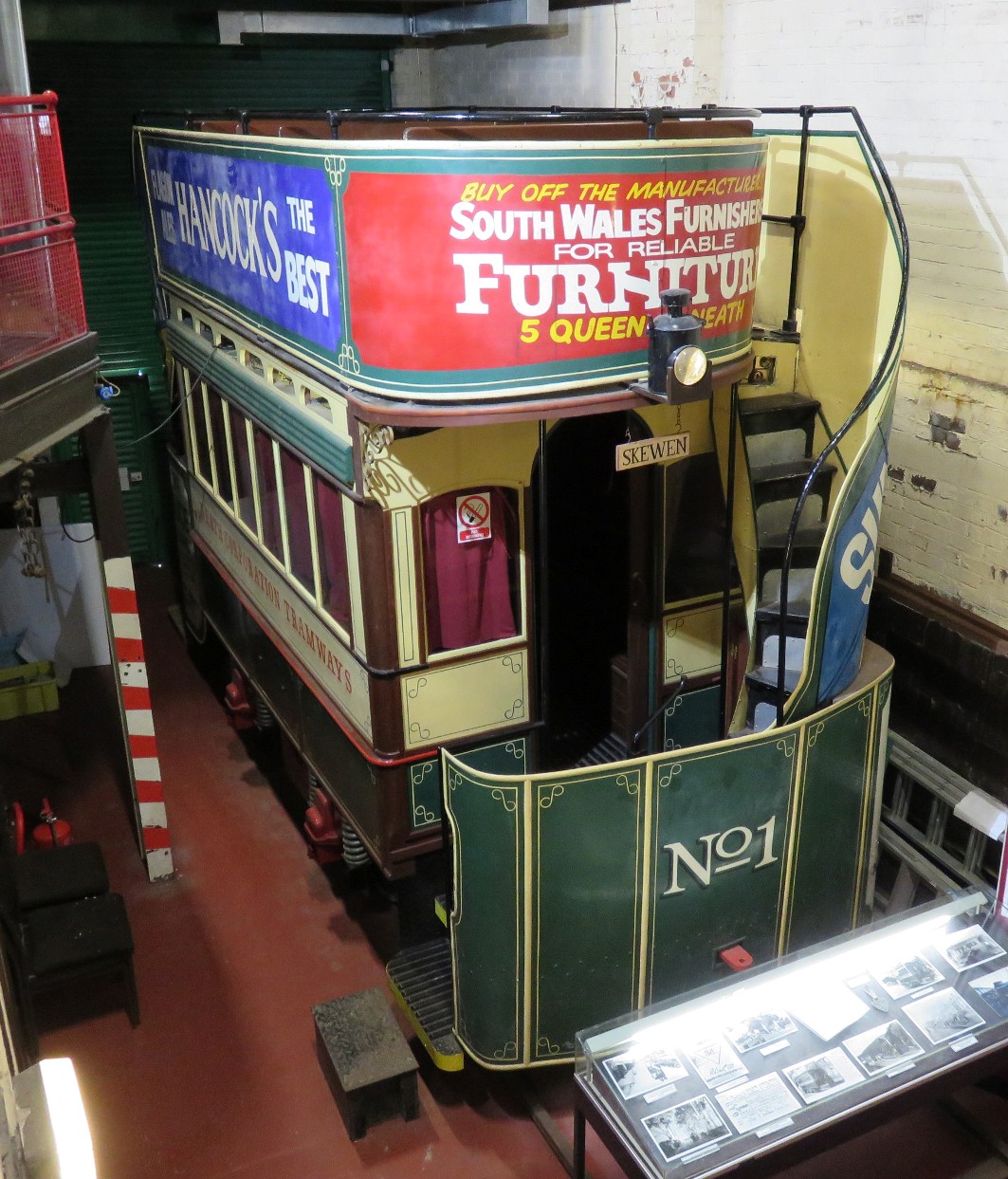 |
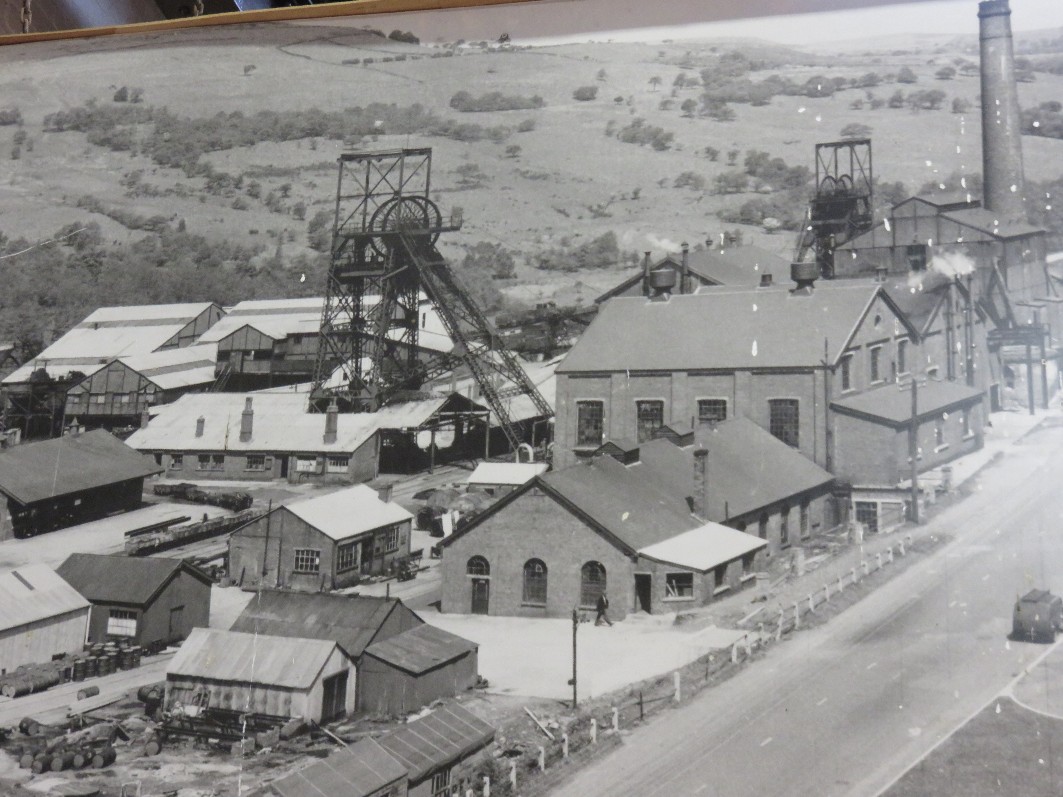 |
The mine’s headgear (as shown in the
historic photo on the left) now lies in 3 chunks at
ground level. This apparently makes it safer! but
definitely not photogenic.
We were conducted round the remains
of the site by 2 very knowledgeable former miners,
and even had a guided tour of the mock-up of a mine
interior, complete with a lesson on how to erect pit
props.
|
|
Kidwelly Tinplate Works
by Eleanor Yates
Pictures by Eleanor Yates and Ruth
Andrews
|
|
|
The Kidwelly
Industrial Museum Trust was set up in 1980 by a
small group of enthusiastic volunteers who wished to
preserve for future generations the history of the
hand mill method of making tinplate. The idea was
first put forward by William Hill Morris, the then
president of the Kidwelly Civic Society. Grants
were received from the Prince of Wales Trust, the
Science Museum, and the British Steel Corporation.
Llanelli Borough Council purchased the site and the
trust was granted a lease and applied for charitable
status.
Kidwelly, on the
Gwendraeth Fach river is the oldest surviving
tinplate works in Europe; it is mostly listed grade
2. It was obvious from the start of the visit that
water played a vital part in the tinplate works as
we were able to see the surviving brickwork and
sluices in the river and later the steam engines
which powered the works. Our guide, Malcolm
MacDonald, then took us into the first of 12
buildings (there are also exhibits outside) and
explained the very labour-intensive process of
turning iron or steel into sheets of metal ready for
tinning. This method includes rolling, hammering,
folding, and then bathing in hot sulphuric acid
followed by rinsing in water before the tinman could
put the sheets into the tinpot. Both men and women
were employed and the museum shows many photographs
of them, advertisements of their product and of tins
including those taken to Antarctica by Scott (see
below).
The museum includes
hot rollers, cold rollers, steam engines, shears,
gears, and a Lancashire boiler with a lovely demure
face (above right). Although it took several
hours to visit and would, if John Christmas had been
in charge, have taken a lot longer, we highly
recommend a visit to this museum.
For information look
at their
website and their
Youtube video
|
|
|
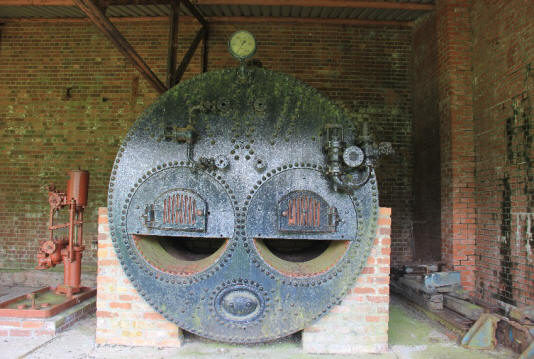 |
|
Carew Tidal Mill
by Ruth Andrews
|
|
|
By the time the group reached Carew
the minibus was running rather late, and the
prospect of a long leisurely lunch had completely
evaporated. Fortunately Alison’s son Angus came up
trumps by meeting us on the causeway with homemade
sandwiches which he had rapidly assembled following
an SOS from his mum.
Our visit to arguably the most
important site on the tour was therefore rather
rushed, and Andy didn’t get there at all as he had
to refuel the minibus.
The present mill, built around 1810,
was abandoned in 1937 but restored in 1972 by the
Carew Estate, which includes Carew Castle. It is
now again looking a little sorrowful (but very
clean). This is the mill which got me interested in
milling and I was shocked to find that my memory of
it was completely inaccurate. Anyway, here are a
few photos to give the general idea.
|
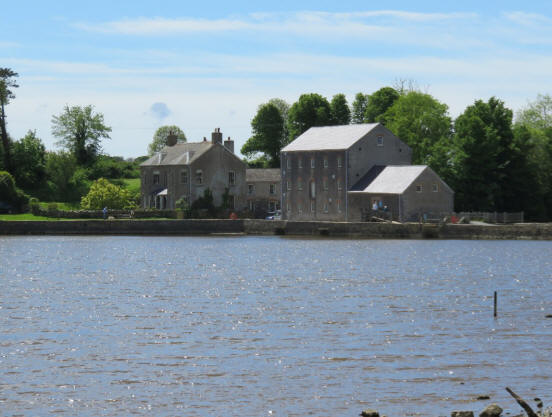
|
|
It has two 16ft undershot waterwheels with wooden
paddles, which have clearly suffered from being
flooded twice a day. I believe that by 1998 the
machinery and south waterwheel were operational, but
I doubt if they are now.
|
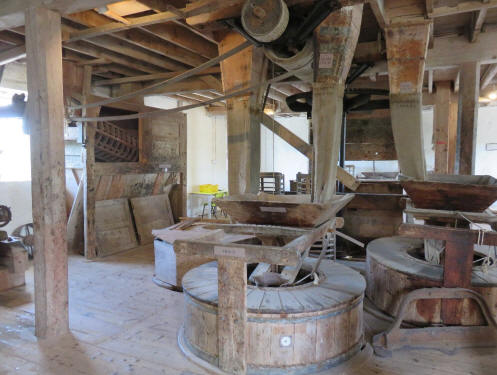 |
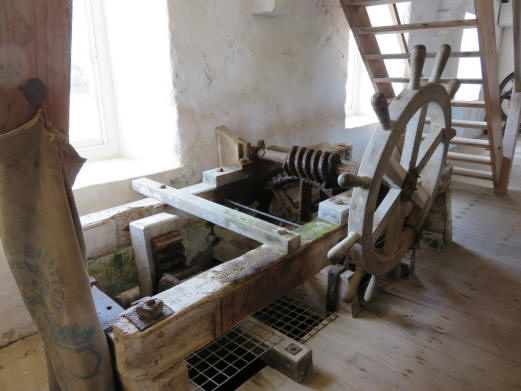 |
 |
|
Tregwynt Woollen Mill
by Ruth Andrews
This compact and picturesque weaving
mill was once water-powered and houses an iron
overshot waterwheel, although it now turns only for
decoration. The fairly modern looms in a 20th
century lean-to machine shed at the rear of the
building are driven by electricity. 30 plus
employees make blankets, throws, cushions, and so
on, as seen right in the mill shop. The site’s most
popular feature is an excellent café. |
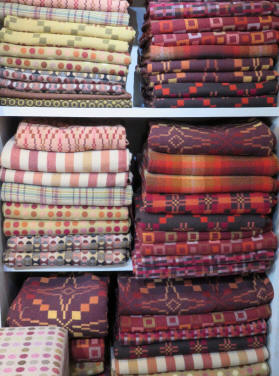 |
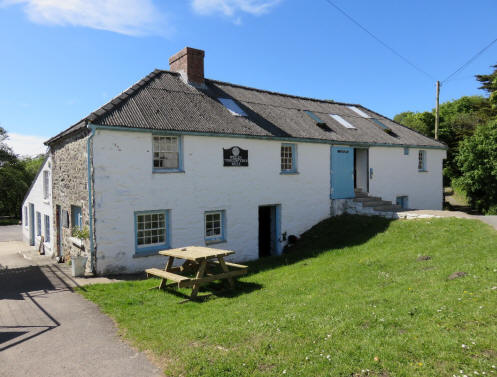 |
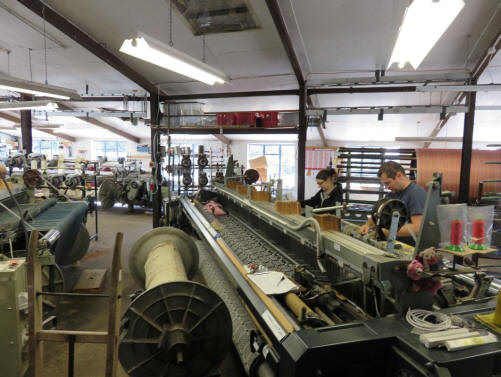 |
|
National Woollen Museum, Dreifach
Felindre
by Ruth Andrews
I asked the group participants to
each choose a site and no-one signed up for this
one. This is not surprising as it was a perfect
example of how to turn a very interesting museum
into something quite depressing. I don’t know what
these students from the Netherlands made of it,
jammed in this narrow aisle with us as well.
|
 |
|
Inevitably the bale breakers, carding
machines, spinning mule, Dobcross looms, and so on
were all behind bars, and there was a sanitised room
full of glass cases with captive examples of woollen
garments and the ‘National Flat Textile Collection’.
Both the mill and the village of
Drefach Felindre are a national heritage site and
the museum re-opened in 2004 following a two year £2
million refit, partly funded by the Heritage Lottery
Fund.
|
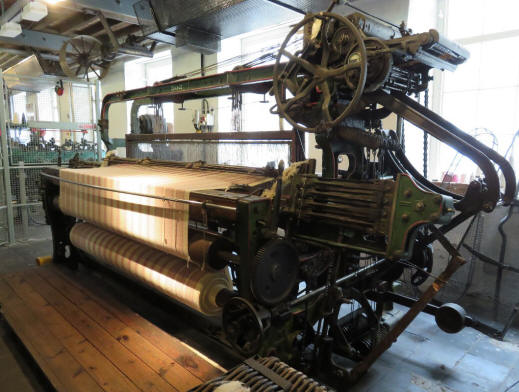 |
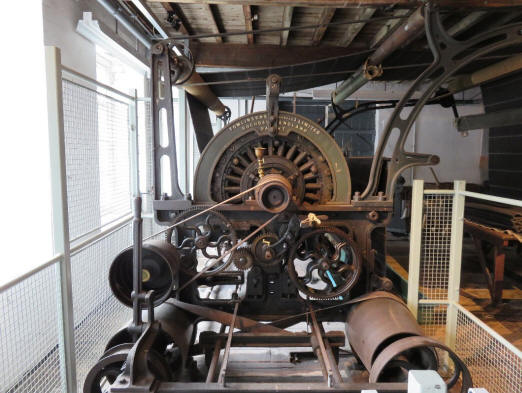 |
|
Y Felin (The Mill), St Dogmaels
by Sheila Viner
Pictures by Sheila Viner and Ruth
Andrews
I fell in love with Y Felin. Who
wouldn’t on a balmy warm and sunny day?
The mill pond full of assorted ducks and geese
parading and quacking about; the relaxed old sofa
in the summerhouse doorway overlooking the pond;
and the mill built of stone set lower down fitting
snuggly into the incline leading to the Abbey ruins.
A second-hand bookshop is in the left-hand doorway
of the mill and then, through the right hand doorway
into the mill itself, there is a table covered with
hen, duck, and goose eggs, recipe and mill history
booklets. A high wall of shelves is stacked with a
surprisingly wide variety of flour types milled by
the owners, Michael and Jane Hall, smartly packaged
and beckoning buyers. The whole scene appeared
enchanting on this lazy afternoon. |
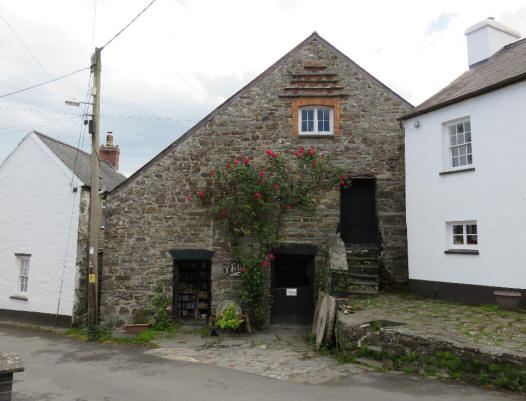 |
|
The Halls bought the small corn mill,
house, and mill pond in 1977 when the buildings were
in a dilapidated state and the pond filled with
rubbish. In 1941 the mill had been briefly used,
but otherwise it had been retired since 1926 after a
well-chronicled life spanning eight centuries dating
back to ownership by St Dogmaels Abbey, when it is
thought to have functioned mainly as a fulling mill
(1291).
They set about restoring it to
working order in 1980 and, a year later, reflooded
the millpond. Mr & Mrs Halls’ diligence paid off
and the mill gained Grade 2* listing in 1993 from
CADW. Royalty descended in 2003 to the village of
St Dogmaels on the Cardigan Bay estuary, and HRH
Prince Charles and his wife, Camilla, called in to
see this little three-storeyed mill at work. |
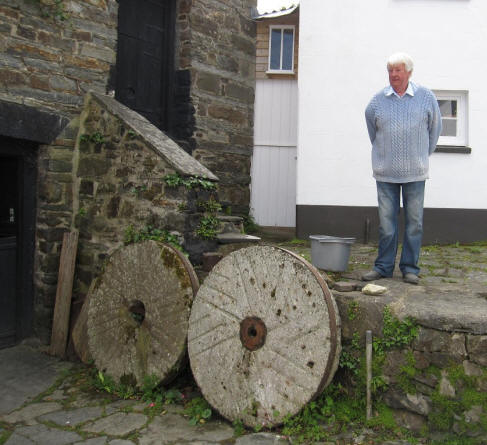 |
|
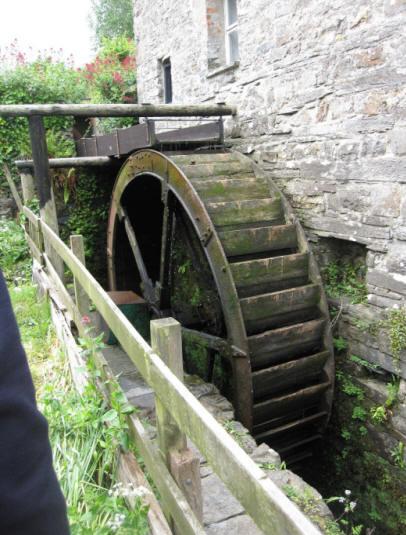 |
Cwmdegwel, a tributary which feeds
into the River Teifi, powers the overshot 16ft metal
wheel. When we visited, the wheel’s buckets were
alarmingly leaky, the water gushing at great speed
in all directions where the buckets weren’t whole
(some of them wholly full of holes) but at the same
time the wheel’s activities loaned a homely
quirkiness to the atmosphere of the place. I do
hope those wheel buckets are repaired sometime soon
as a lot of energy is lost with each turn of the
wheel.
I later learned that the iron wheel
shrouds came from Grade 2 Listed Felin Asaf (Dewiston
Mill) at St Davids which otherwise still has all its
machinery in situ and is now part of a holiday home.
Three pairs of stones plus dressing
and sifting apparatus are on the first floor and the
meal chutes deposit the flour to the weighing and
bagging area behind the shop.
|
|
From his three sets of stones,
Michael produces unbleached white, garlic and chive,
seed and herb, malthouse, self-raising, 100% rye,
rolled oats, and bran as well as the ever popular
100% wholemeal flour – a staggering menu of flour
types which must keep him and Jane very busy – and
they retired for a quiet life! |
 |
|
Internal Fire Museum of Power
by Andy Fish
Pictures by Andy Fish and Ruth
Andrews
On the Saturday of our trip to Wales we visited the
Internal Fire museum at Tanygroes, Ceredigion. The
museum was founded in 2003 and was set up to cover
the history and use of large engines in the 20th
century. It houses a wide range of working exhibits
with engines running daily. A selection of smaller
engines runs all day
from 10:30 until 5:00, larger engines are
started as people come and go. Recently it has been
decided to construct a Steam Hall to save and
restore stationary and marine steam engines to
working order. This includes the Hathorn-Davy
triple expansion steam engine from Wessex Water’s
pumping station at Sutton Poyntz near Weymouth in
Dorset; the engine arrived at the end of January.
These photos show the progress by the time of our
visit in mid-May.
The members who came on our study
trip to Dorset organized by John Silman and Tony
Yoward around eight years ago will remember our
visit to Sutton Poyntz where this engine was stored
outside under tarpaulins awaiting its fate.
For more information go to
www.internalfire.com.
|
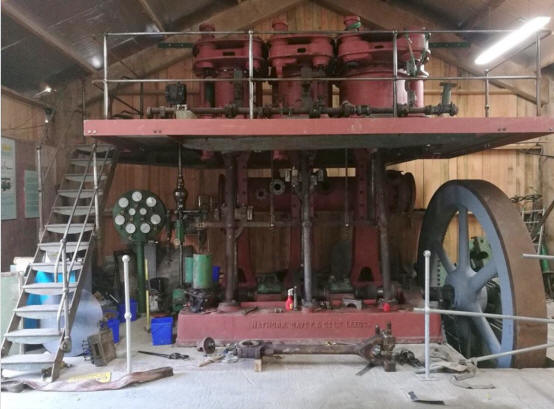 |
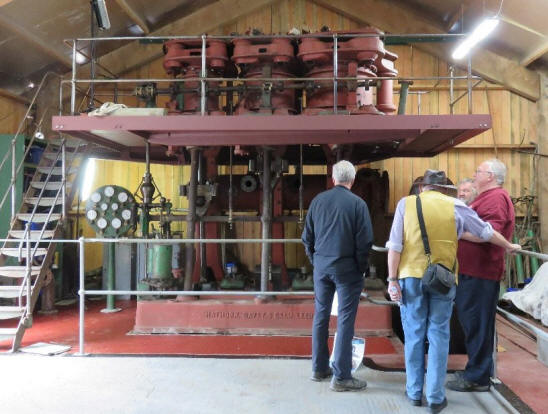 |
|
Hetty Winding Engine
by Ivor New
Pictures by Ivor New and Ruth Andrews
The
shaft that was later to be called Hetty was sunk in
1851 to locate and extract anthracite, the then
favoured locomotive fuel. Great Western Railway
interests obtained control of the pit and together
with five additional pits became known as the Great
Western Collieries.
The shaft was named Hetty in 1875
when it was deepened and had its Barker and Cope
steam winding engine installed. Hetty was the
owner’s niece who performed the opening ceremony by
breaking a bottle of wine on the winding drum.
|
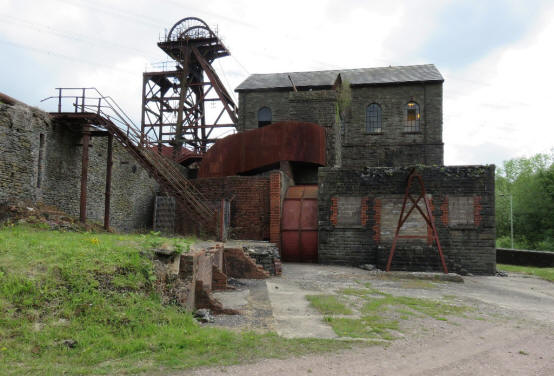 |
|
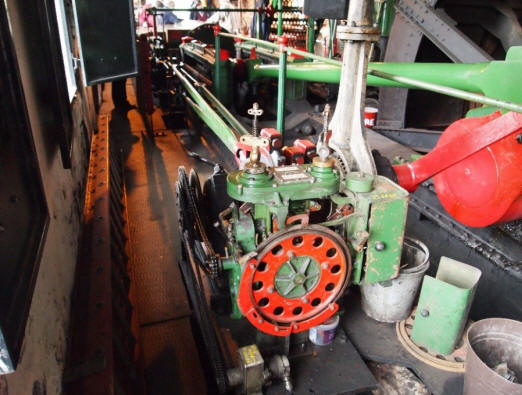 |
The engine was later rebuilt by
Worsley Menses who added piston expansion valves.
Later still limiter equipment was added
(illustrated), as a safety measure, to stop over
winding.
Hetty
is like a venerable old lady who when younger was
present at all the major events of the day and
hasmanaged to survive, mainly due to her current
comparative insignificance. Relatively early in her
life the shaft shifted out of alignment during a
landslip. Hetty was then removed from production
work and used as a ventilation and maintenance shaft
until the Great Western colliery ceased working.
She was then utilised by an adjoining colliery as a
personnel lift. When, in turn, that colliery shut
in 1983 the significance her industrial heritage was
realised and she received a Grade 1 listing.
|
|
On 1 March this year The Great
Western Colliery Preservation Trust signed a 30-year
lease to enable it to look after this important
site. To celebrate the event the engine was
operated using compressed air. It is hoped this
will become an annual event taking place late each
September. |

Operator's Station
|

Winding
Drum |
|
Blaenavon Iron Works
Our final visit of the tour was to
Blaenavon Iron Works, principally for a lunch stop,
which turned out to be sandwiches from the Co-op.
The site has extensive remains of several blast
furnaces and casting houses (left), and a prominent
water balance lift (right).
Thanks to everyone for a stimulating
and enjoyable tour, even if it wasn’t all mills.
Andy is already considering next year – maybe North
Wales. |
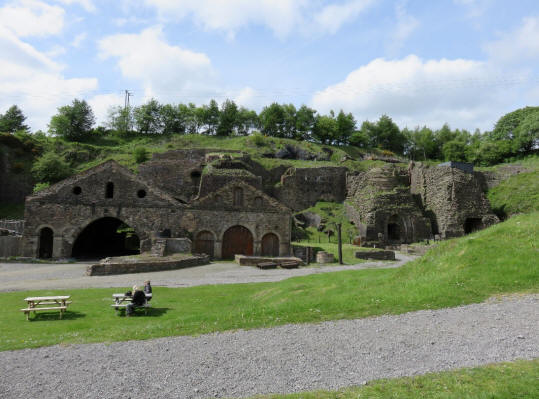 |
 |
